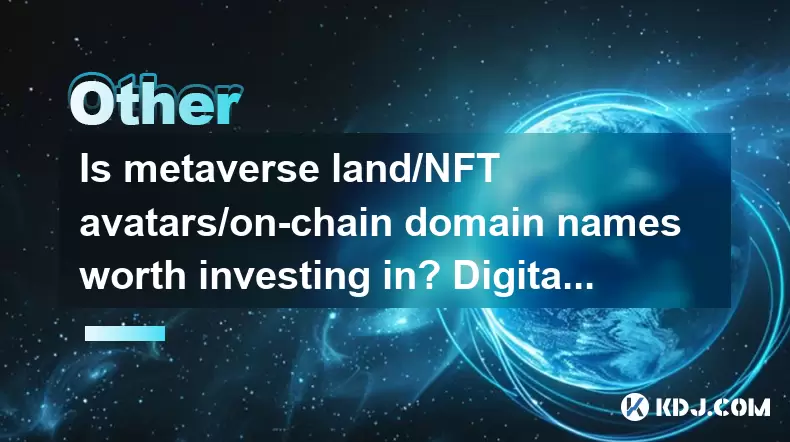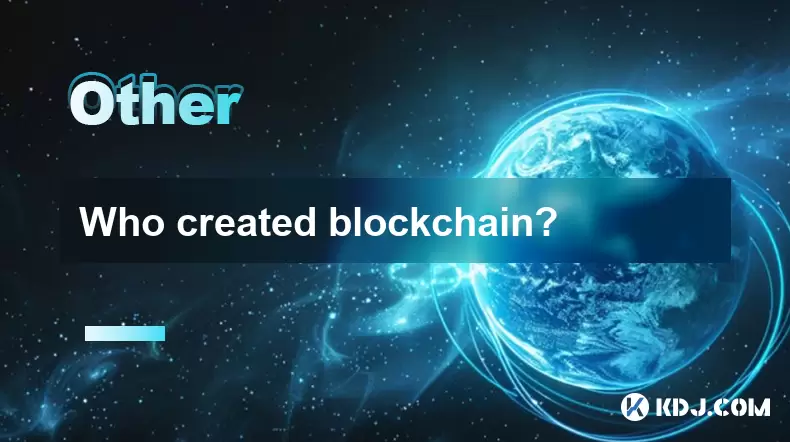-
 Bitcoin
Bitcoin $115200
-2.68% -
 Ethereum
Ethereum $3601
-5.16% -
 XRP
XRP $3.035
-2.96% -
 Tether USDt
Tether USDt $0.9997
-0.04% -
 BNB
BNB $764.5
-5.43% -
 Solana
Solana $168.1
-5.92% -
 USDC
USDC $0.9998
-0.02% -
 Dogecoin
Dogecoin $0.2090
-4.80% -
 TRON
TRON $0.3272
-0.49% -
 Cardano
Cardano $0.7306
-5.00% -
 Hyperliquid
Hyperliquid $39.16
-12.22% -
 Stellar
Stellar $0.3967
-4.96% -
 Sui
Sui $3.566
-5.95% -
 Chainlink
Chainlink $16.55
-6.57% -
 Bitcoin Cash
Bitcoin Cash $552.3
-3.90% -
 Hedera
Hedera $0.2516
-4.69% -
 Avalanche
Avalanche $21.99
-5.75% -
 Toncoin
Toncoin $3.621
-0.28% -
 Ethena USDe
Ethena USDe $1.000
-0.03% -
 UNUS SED LEO
UNUS SED LEO $8.951
0.02% -
 Litecoin
Litecoin $105.9
-3.59% -
 Shiba Inu
Shiba Inu $0.00001232
-5.00% -
 Polkadot
Polkadot $3.640
-5.55% -
 Uniswap
Uniswap $9.048
-7.03% -
 Monero
Monero $301.8
-1.51% -
 Dai
Dai $0.9999
-0.01% -
 Bitget Token
Bitget Token $4.334
-3.66% -
 Pepe
Pepe $0.00001064
-6.17% -
 Cronos
Cronos $0.1367
-5.78% -
 Aave
Aave $259.2
-4.59%
Is metaverse land/NFT avatars/on-chain domain names worth investing in? Digital asset value analysis
The value of metaverse land, NFT avatars, and on-chain domain names depends on factors like location, platform popularity, and utility, but investing carries risks like market volatility and regulatory uncertainty.
May 29, 2025 at 01:00 pm

The rise of the metaverse, NFTs, and on-chain domain names has sparked a significant interest in the potential investment value of these digital assets. As the digital economy continues to evolve, many investors are pondering whether these assets are worth adding to their portfolios. In this article, we will delve into the value analysis of metaverse land, NFT avatars, and on-chain domain names, exploring their current market trends, potential benefits, and risks associated with investing in them.
Understanding Metaverse Land
Metaverse land refers to virtual real estate within various metaverse platforms, such as Decentraland, The Sandbox, and Axie Infinity. These platforms allow users to buy, sell, and develop virtual plots of land, which can be used for various purposes, including hosting events, building virtual businesses, or simply as a speculative investment.
The value of metaverse land can be influenced by several factors. Location within the metaverse is a key determinant of value, much like in the physical world. Plots near popular areas or with high visibility tend to command higher prices. Platform popularity also plays a significant role; lands on more widely used and recognized platforms often have higher demand and, consequently, higher value. Additionally, development potential and current utilization of the land can affect its price, with developed lands or those with high potential for development being more valuable.
NFT Avatars: Digital Identity and Value
NFT avatars are unique digital representations of individuals within the metaverse or other digital platforms. These avatars can be bought, sold, and traded as NFTs, often carrying significant cultural or social value. The value of an NFT avatar is influenced by its rarity, the reputation of the artist or collection, and its utility within the platform where it is used.
For example, avatars from high-profile collections like Bored Ape Yacht Club or CryptoPunks often fetch high prices due to their exclusivity and the status they confer on their owners. Utility is another critical factor; avatars that offer additional benefits, such as access to exclusive events or virtual goods, can be more valuable. Additionally, community engagement and cultural relevance can drive the value of NFT avatars, as they become symbols of identity and belonging within digital communities.
On-Chain Domain Names: Digital Real Estate for the Web3 Era
On-chain domain names are digital addresses that exist on blockchain networks, such as Ethereum. These domain names, often referred to as Web3 domains, provide a human-readable way to interact with blockchain addresses and decentralized applications. Platforms like ENS (Ethereum Name Service) and Unstoppable Domains allow users to purchase and manage these domain names.
The value of on-chain domain names can be assessed through several lenses. Simplicity and memorability of the domain name are crucial factors; shorter, easier-to-remember names tend to be more valuable. Utility is another key aspect, as domain names that offer additional features, such as the ability to link to multiple blockchain addresses or integrate with various dApps, can command higher prices. Market trends and speculative interest also play significant roles in determining the value of on-chain domain names, with popular or trending names often seeing increased demand.
Investment Risks and Considerations
Investing in metaverse land, NFT avatars, and on-chain domain names comes with its own set of risks. Market volatility is a significant concern, as the prices of these digital assets can fluctuate wildly based on market sentiment and trends. Liquidity can also be an issue, particularly for less popular or niche assets, making it challenging to buy or sell them at desired prices.
Regulatory uncertainty is another risk factor, as the legal status of these digital assets remains unclear in many jurisdictions. Changes in regulations could impact their value and the ability to trade them. Platform dependency is a risk specific to metaverse land and NFT avatars, as the value of these assets is tied to the success and stability of the platforms on which they exist. If a platform fails or loses popularity, the value of assets within it could plummet.
Assessing the Investment Potential
When considering whether to invest in metaverse land, NFT avatars, or on-chain domain names, it is essential to conduct thorough research and due diligence. Understanding the specific platform or ecosystem in which the asset exists is crucial, as this can affect its potential for growth and utility. Evaluating the asset's unique features and benefits can help determine its value proposition and potential for appreciation.
Diversification is a key strategy to mitigate risk, as it involves spreading investments across different types of assets and platforms. By diversifying, investors can reduce their exposure to the risks associated with any single asset or platform. Long-term perspective is also important, as the value of these digital assets may take time to realize, and short-term fluctuations should be viewed in the context of broader market trends.
Case Studies: Successful Investments in Digital Assets
To illustrate the potential value of investing in metaverse land, NFT avatars, and on-chain domain names, let's look at a few case studies.
Decentraland Land: In 2021, a plot of land in Decentraland sold for a record-breaking $2.4 million. This plot was located in a prime area of the metaverse and had significant development potential, contributing to its high value.
Bored Ape Yacht Club Avatars: Bored Ape Yacht Club NFTs have become highly sought-after, with some avatars selling for millions of dollars. The value of these NFTs is driven by their rarity, the cultural significance of the collection, and the utility they offer within the BAYC community.
ENS Domain Names: The Ethereum Name Service domain "crypto.eth" was sold for 300 ETH (approximately $1.5 million at the time of sale). This domain's value was driven by its simplicity, memorability, and the growing utility of ENS domains within the Ethereum ecosystem.
FAQs
Q: How can I determine the value of a specific piece of metaverse land?
A: To determine the value of a specific piece of metaverse land, consider factors such as its location within the metaverse, the popularity of the platform on which it exists, its development potential, and any current utilization. Researching recent sales of similar plots can also provide insights into market trends and pricing.
Q: Are there any tools or platforms that can help me track the value of NFT avatars?
A: Yes, several platforms offer tools to track the value of NFT avatars. Websites like OpenSea, Rarible, and Nifty Gateway provide real-time data on NFT prices, including historical sales and current listings. Additionally, platforms like CryptoSlam and NonFungible.com offer comprehensive analytics and market insights for NFT collections.
Q: What are the potential uses of on-chain domain names beyond simple address management?
A: On-chain domain names have several potential uses beyond simple address management. They can be used to create decentralized websites, manage digital identities, and facilitate transactions across different blockchain networks. Some domain names also offer additional features, such as the ability to link to multiple blockchain addresses or integrate with various dApps, enhancing their utility and value.
Q: How can I mitigate the risks associated with investing in digital assets?
A: To mitigate the risks associated with investing in digital assets, consider the following strategies: diversify your investments across different types of assets and platforms, conduct thorough research and due diligence before investing, maintain a long-term perspective, and stay informed about market trends and regulatory changes. Additionally, consider setting clear investment goals and risk tolerance levels to guide your decision-making process.
Disclaimer:info@kdj.com
The information provided is not trading advice. kdj.com does not assume any responsibility for any investments made based on the information provided in this article. Cryptocurrencies are highly volatile and it is highly recommended that you invest with caution after thorough research!
If you believe that the content used on this website infringes your copyright, please contact us immediately (info@kdj.com) and we will delete it promptly.
- Cardano Price, Pi Network, and Crypto Presales: What's the Buzz?
- 2025-08-02 08:50:12
- XRP Fund Success: Teucrium CEO Reveals Trillions on the Horizon
- 2025-08-02 09:10:12
- Challenge Coins: More Than Just Collectibles – A Military Tradition
- 2025-08-02 08:30:12
- Under the Radar: Hunting for 100x Crypto Gems in a Pi Network World
- 2025-08-02 08:30:12
- Bitcoin, Solana, and Altcoin Season: What's Hot and What's Not?
- 2025-08-02 07:10:12
- Toncoin, Rollblock, and the Token Offering Landscape: A New York Minute
- 2025-08-02 07:10:12
Related knowledge

What is the difference between a blockchain and a database?
Aug 01,2025 at 09:36pm
Understanding the Core Structure of a BlockchainA blockchain is a decentralized digital ledger that records data in a series of immutable blocks linke...

What is a hash in a blockchain?
Aug 02,2025 at 05:28am
Understanding the Concept of Hash in BlockchainA hash in the context of blockchain technology refers to a unique digital fingerprint generated by a cr...

What is a hash in a blockchain?
Aug 02,2025 at 04:43am
Understanding the Concept of Hash in BlockchainA hash in the context of blockchain technology refers to a unique digital fingerprint generated by a cr...

Who created blockchain?
Aug 02,2025 at 05:15am
What Is Blockchain and Why Does Its Origin Matter?Understanding who created blockchain begins with recognizing what blockchain actually is. Blockchain...

How to start a business using blockchain?
Jul 28,2025 at 12:36am
Understanding the Basics of Blockchain TechnologyBefore diving into the process of starting a business using blockchain, it's crucial to understand wh...

What is a token on the blockchain?
Jul 21,2025 at 07:00am
Understanding the Concept of a TokenIn the realm of blockchain technology, a token is a digital representation of an asset or utility that exists on a...

What is the difference between a blockchain and a database?
Aug 01,2025 at 09:36pm
Understanding the Core Structure of a BlockchainA blockchain is a decentralized digital ledger that records data in a series of immutable blocks linke...

What is a hash in a blockchain?
Aug 02,2025 at 05:28am
Understanding the Concept of Hash in BlockchainA hash in the context of blockchain technology refers to a unique digital fingerprint generated by a cr...

What is a hash in a blockchain?
Aug 02,2025 at 04:43am
Understanding the Concept of Hash in BlockchainA hash in the context of blockchain technology refers to a unique digital fingerprint generated by a cr...

Who created blockchain?
Aug 02,2025 at 05:15am
What Is Blockchain and Why Does Its Origin Matter?Understanding who created blockchain begins with recognizing what blockchain actually is. Blockchain...

How to start a business using blockchain?
Jul 28,2025 at 12:36am
Understanding the Basics of Blockchain TechnologyBefore diving into the process of starting a business using blockchain, it's crucial to understand wh...

What is a token on the blockchain?
Jul 21,2025 at 07:00am
Understanding the Concept of a TokenIn the realm of blockchain technology, a token is a digital representation of an asset or utility that exists on a...
See all articles

























































































